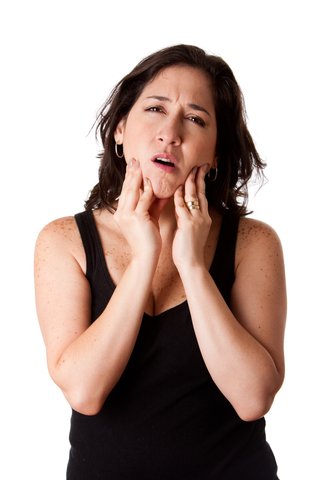Are you a tooth grinder?
August 25th, 2015

Perhaps you had a particularly irritating commute home from work, and you realize at the end that your jaw was clenched tight the entire time. Or maybe you grind your teeth when you are nervous or anxious about an upcoming business meeting. Most people grind their teeth from time to time, but it’s important to recognize the signs and symptoms of chronic tooth grinding. Known as bruxism, this condition can lead to oral health problems and dental issues later.
Signs and symptoms of bruxism
- Your partner might complain about the fact that you grind your teeth while you sleep. People who grind their teeth on a regular basis often do so during the night, and aren’t necessarily aware it is happening. However, your partner will more than likely notice if you develop this condition. If he or she mentions that it happens often, you might want to contact our team at Cataraqui Dental Centre.
- You may experience a persistent and unexplained headache if you grind your teeth too often. You may not realize why you have this headache, because you are not aware of the fact that you have been grinding your teeth. Take note of any headaches you have, and if you cannot attribute them to another source, please give us a call to set up an appointment with Drs. Tom Holmes, Gordon Lansdown, Karen Nesbitt, and Nick Cosman.
- Your jaw will more than likely become sore if you suffer from bruxism. If you wake up in the morning and have any discomfort in your jaw, you might have spent the night grinding your teeth. Our team can give you tips and advice for managing bruxism.
While many people associate their teeth grinding with stress, it actually is caused more often by crooked teeth, an overbite, or an under bite. If left untreated, bruxism can lead to a variety of complications, including dental injuries, hearing loss, and the onset of TMD. If you think that you might be a chronic tooth grinder, it might be time to set up an appointment at our Kingston, ON office in order to find out which treatment options are available to you.





